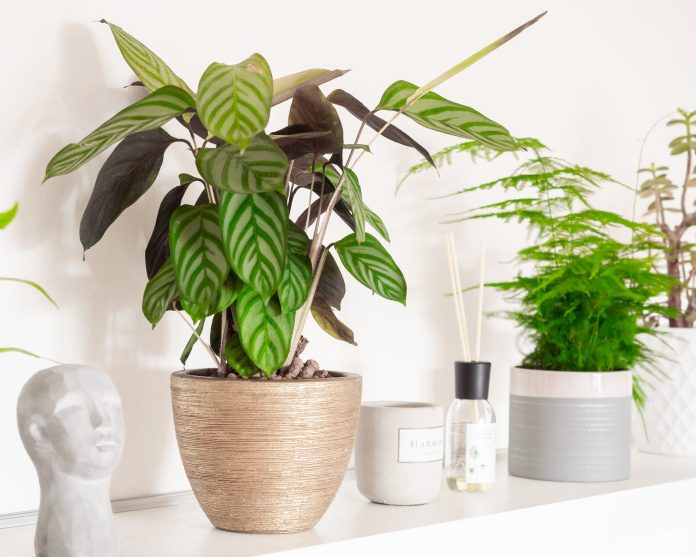Calathea plants, also known as prayer plants, are prized for their beautiful, colorful foliage and unique patterns. These tropical perennials are native to the rainforests of South America and are perfect for living as houseplants. With their striking foliage and easy care, Calathea plants are a great addition to any indoor plant collection.
Light Requirements for Calathea Plants
Calathea plants thrive in bright, indirect light and do not tolerate direct sunlight. Place your Calathea plant near a bright window, but be sure to protect it from strong sunlight. If your home doesn’t get enough natural light, you can also use fluorescent lights to provide supplemental lighting.
Watering Calathea plants
Calathea plants are native to tropical rainforests and therefore require consistent moisture. It is important not to let the soil dry out completely, but at the same time, you should avoid overwatering as this can lead to root rot. A good rule of thumb is to water your Calathea plants when the top inch of soil is dry. Be sure to use a well-drained pot to prevent root rot caused by standing water.
Moisture for Calathea Plants
Calathea plants are native to very humid environments, so they need high humidity to thrive. To keep your Calathea plant humid enough, you can place a humidifier near it or place the pot on a tray filled with pebbles and water. This will create a humid microclimate around the plant, which will help it thrive.
Temperature for Calathea plants
Calathea plants like warm temperatures and do not tolerate cold winds. Place your Calathea plant in a room with a temperature between 65-85°F (18-29°C). Be sure to avoid placing it near cold windows or air conditioners, as this will cause the leaves to become brittle and discolored.
Fertilizing Calathea plants
Calathea plants do not need to be fertilized often, but can be fertilized every 4-6 weeks during the growing season (spring and summer). Use a balanced, water-soluble fertilizer and be sure to dilute it to half strength before applying. Over-fertilization can cause leaf burn and yellowing, so it is important to watch the amount of fertilizer applied.
Potting and Potting Calathea Plants
Calathea plants prefer to be slightly potted, so there is no need to change pots too often. Pot changes should be done every 2-3 years, or when plants outgrow their current pots. Use a well-drained potting mix, such as a peat-based mix, and be sure to plant Calathea at the same depth as it was growing before.
Pests and Diseases
Calathea plants are relatively resistant to pests and diseases, but may be susceptible to whiteflies, leaf mites and mesquite. To prevent these pests from becoming a problem, check your Calathea plants regularly for any signs of infestation and treat them promptly if necessary.
Propagating Calathea Plants
Calathea plants can easily reproduce by dividing. The best time to divide your Calathea is in the spring or summer, when the plants are actively growing. To divide your Calathea, gently remove it from the pot and separate the individual clumps of roots and leaves. Replant each clump into its own pot and water thoroughly.
Pruning Calathea plants
Calathea plants don’t need to be pruned often, but you can trim yellow or damaged leaves to maintain a healthy appearance. You can also pinch back the tips of the plant to promote denser growth. Be sure to use clean, sharp scissors to avoid damaging the plant.
Conclusion
Calathea plants are stunning and unique houseplants that can add a touch of the tropics to any indoor space. With proper care and attention, they can thrive and bring joy to their owners for years to come. Just remember to provide bright indirect light, consistent moisture, high humidity and warm temperatures and your Calathea plants will thrive. Happy gardening!


